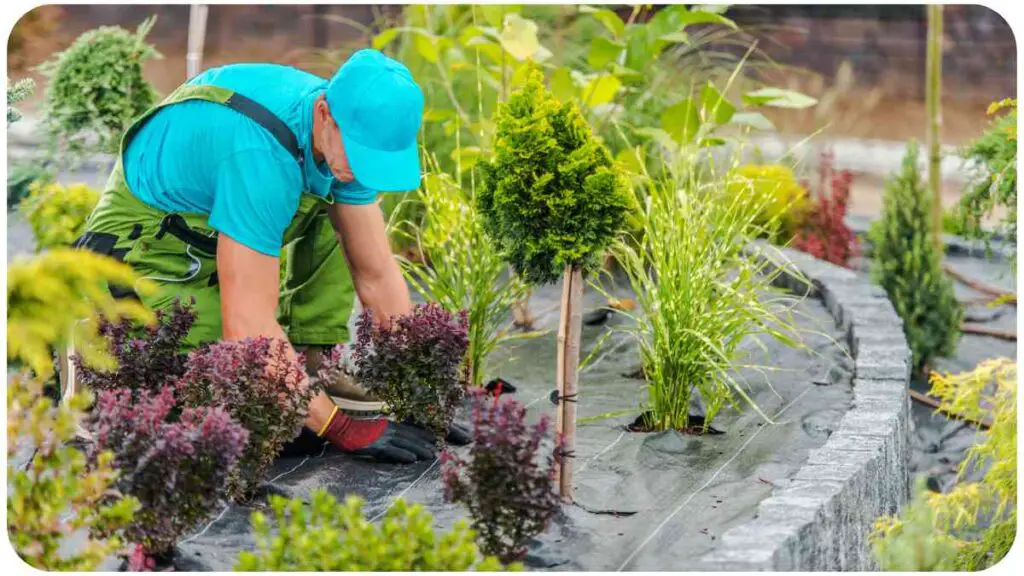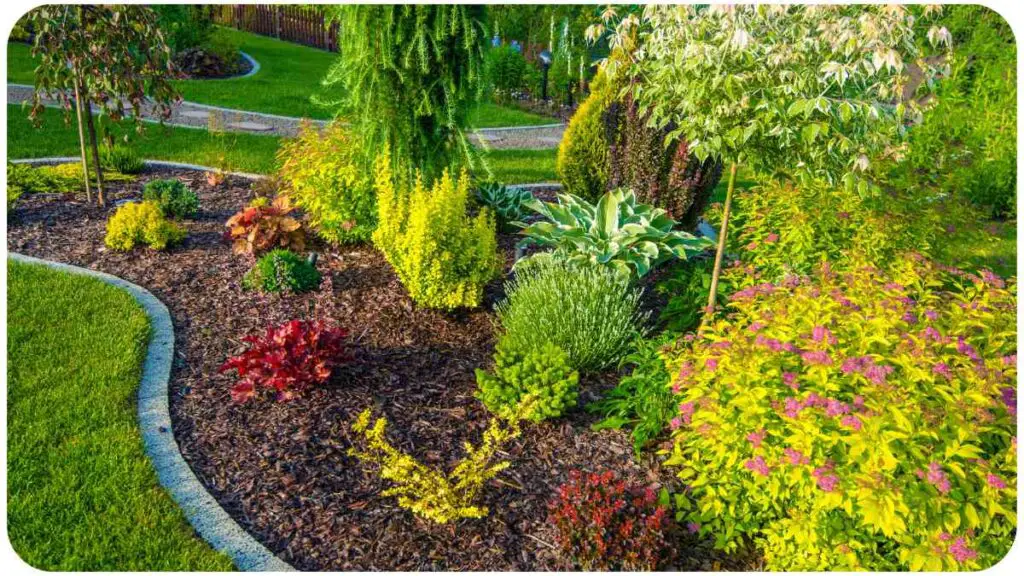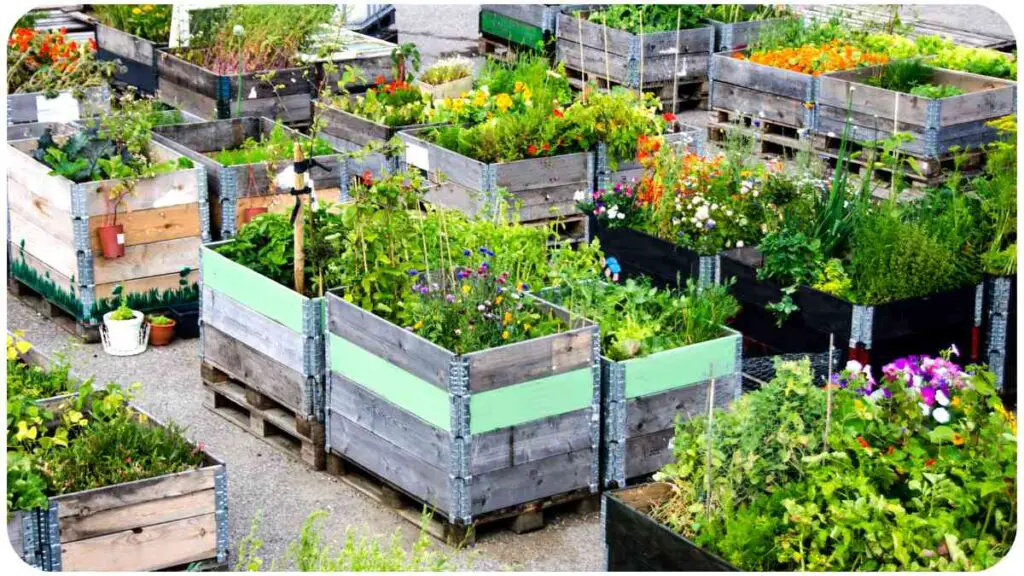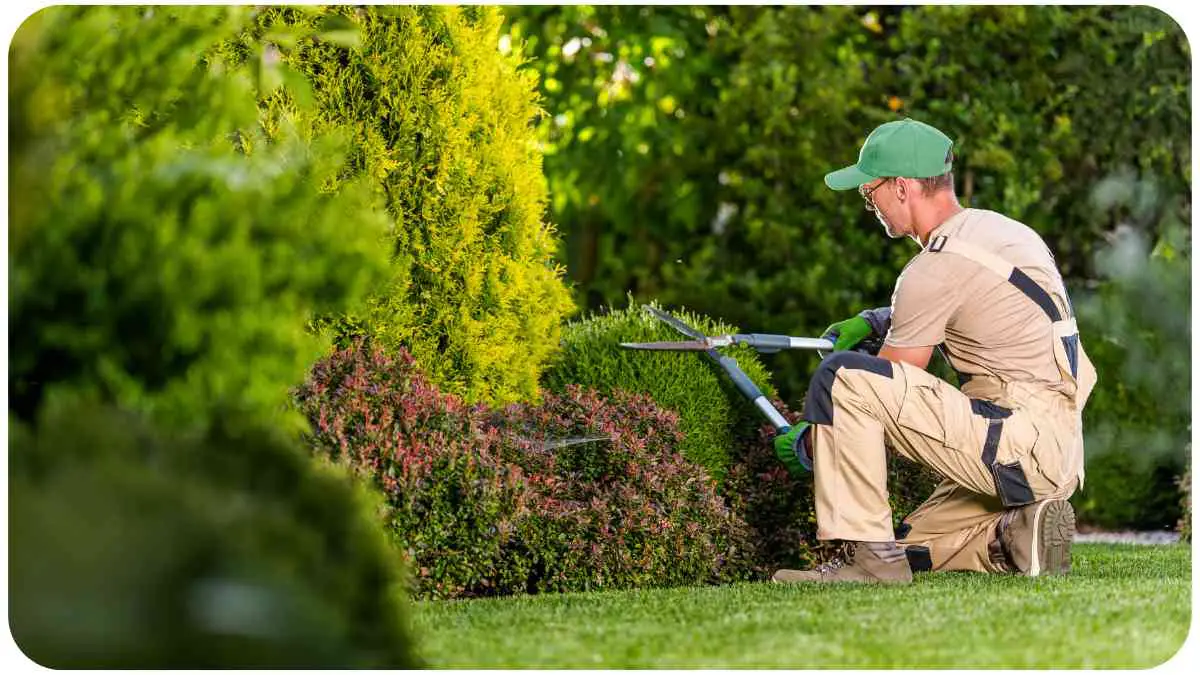In today’s fast-paced urban environments, many people dream of having a lush garden oasis to escape to but struggle to find the time to maintain it. If you’re one of these busy urbanites yearning for a green space to call your own, fear not! In this comprehensive guide, we’ll explore the ins and outs of creating low-maintenance gardens tailored to the needs of those with hectic schedules.
| Takeaways |
|---|
| 1. Prioritize low-maintenance plant options such as succulents, lavender, and native wildflowers to minimize upkeep. |
| 2. Efficient watering techniques, like drip irrigation and mulching, can conserve water and reduce the need for frequent watering. |
| 3. Implement weed control strategies such as hand weeding and mulching to prevent weed growth and minimize maintenance tasks. |
| 4. Manage pests organically using companion planting, natural predators, and organic pest control products to avoid harsh chemicals. |
| 5. Embrace sustainable practices like water conservation, composting, and native plantings to create an eco-friendly garden. |
| 6. Maximize space in small urban gardens through vertical gardening, container gardening, and stacking and layering techniques. |
| 7. Learn from successful case studies of low-maintenance gardens to gain inspiration and practical insights for your own garden. |
| 8. Get started on your low-maintenance garden today and enjoy the benefits of a green oasis in the midst of urban life. |
2. Benefits of Low-Maintenance Gardens

Low-maintenance gardens offer a plethora of advantages over their high-maintenance counterparts. Let’s compare them side by side:
When urban space is limited, maximize it with vertical gardening solutions. Elevate your greenery and save space with tower and wall gardens for a lush urban oasis.
| Aspect | Low-Maintenance Gardens | Traditional Gardens |
|---|---|---|
| Time Commitment | Minimal | Significant |
| Water Usage | Reduced | High |
| Labor Intensity | Low | High |
| Cost of Maintenance | Lower | Higher |
| Environmental Impact | Less | Potentially More |
By opting for a low-maintenance garden, you not only save time and effort but also contribute to water conservation efforts and reduce your environmental footprint.
3. Choosing the Right Plants
Selecting the appropriate plants is crucial for the success of your low-maintenance garden. Here are some options that thrive with minimal care:
Table: Low-Maintenance Plant Options
| Plant | Sunlight Requirements | Watering Needs | Soil Type | Special Considerations |
|---|---|---|---|---|
| Succulents | Full sun | Low | Well-drained | Drought-tolerant; ideal for arid climates |
| Lavender | Full sun | Low | Sandy, well-drained | Fragrant; attracts pollinators |
| Ornamental Grasses | Full sun to partial shade | Low | Well-drained | Adds texture and movement to the garden |
| Perennial Herbs | Full sun | Moderate | Well-drained | Culinary uses; pest-repellent properties |
| Native Wildflowers | Full sun to partial shade | Low to moderate | Variable | Low-maintenance; attracts beneficial insects |
When selecting plants, prioritize native species and those adapted to your local climate. These plants are more resilient and require less intervention to thrive.
Achieve a thriving garden without breaking the bank with these clever hacks. Discover cost-effective ways to create a lush outdoor space with budget-friendly gardening tips.
4. Designing Your Low-Maintenance Garden

Efficient garden design can significantly reduce the need for ongoing maintenance. Consider the following tips when planning your low-maintenance oasis:
Table: Essential Tools and Equipment
| Tool/Equipment | Purpose |
|---|---|
| Raised Beds | Improve drainage and reduce weed growth |
| Mulch | Suppress weeds, retain moisture |
| Drip Irrigation | Efficient water delivery directly to plant roots |
| Garden Gloves | Protect hands while pruning and weeding |
| Hand Trowel | Planting small seedlings and bulbs |
By incorporating these elements into your garden design, you can minimize the time and effort required for upkeep while maximizing its visual appeal.
5. Efficient Watering Techniques
Watering efficiently is key to maintaining a low-maintenance garden. Here are some techniques to help you conserve water and minimize the need for frequent irrigation:
- Drip Irrigation: Install a drip irrigation system to deliver water directly to the roots of plants, reducing water loss through evaporation and runoff.
- Mulching: Apply a layer of organic mulch, such as wood chips or straw, around plants to retain moisture in the soil and suppress weed growth.
- Watering Schedule: Water deeply but infrequently to encourage deep root growth and drought tolerance in plants. Avoid overwatering, which can lead to root rot and other issues.
- Rainwater Harvesting: Set up rain barrels or other rainwater harvesting systems to collect and store rainwater for use in your garden, reducing reliance on municipal water sources.
By implementing these watering techniques, you can keep your garden thriving while minimizing water usage and maintenance requirements.
Turn everyday items into unique planters for a touch of creativity in your garden. Explore innovative ideas to repurpose objects and transform them into creative planters for your greenery.
6. Weed Control Strategies
Weeds can quickly take over a garden if left unchecked, but there are several strategies you can employ to keep them at bay:
Table: Common Weeds and How to Manage Them
| Weed | Management Strategy |
|---|---|
| Dandelion | Hand pulling or using a dandelion digger |
| Crabgrass | Apply pre-emergent herbicides in early spring |
| Bindweed | Cut back regularly and mulch heavily to suppress growth |
| Purslane | Regularly hoe or hand pull before it sets seed |
| Chickweed | Apply a thick layer of mulch to smother seedlings |
Regular maintenance, such as hand weeding and mulching, is essential to prevent weeds from establishing themselves in your garden and competing with your desired plants for resources.
7. Pest Management in Low-Maintenance Gardens
While low-maintenance gardens may require less ongoing care, they are not immune to pest problems. Here are some eco-friendly strategies for managing pests without resorting to harsh chemicals:
- Companion Planting: Planting certain species together can help repel pests or attract beneficial insects that prey on pests. For example, marigolds can deter nematodes, while lavender attracts pollinators that also feed on aphids and other pests.
- Natural Predators: Encourage natural predators like ladybugs, lacewings, and birds by providing habitat and food sources such as native plants and bird feeders. These predators can help keep pest populations in check.
- Organic Pest Control: Use organic pest control products such as neem oil, insecticidal soap, or diatomaceous earth to target specific pests while minimizing harm to beneficial insects and the environment.
By adopting these pest management strategies, you can effectively control pests in your low-maintenance garden while promoting a healthy and balanced ecosystem.
Prepare your garden to withstand challenges and thrive in any condition. Learn strategies for building resilience in your garden, ensuring long-term success and sustainability.
8. Seasonal Maintenance Tips
Even low-maintenance gardens require some seasonal upkeep to keep them looking their best throughout the year. Here are some tasks to tackle each season:
- Spring: Clear debris, divide perennials, and apply compost or organic fertilizer to replenish soil nutrients.
- Summer: Monitor for pests and diseases, water as needed, and deadhead flowers to promote continued blooming.
- Fall: Remove spent annuals, cut back perennials, and mulch to protect plants over the winter months.
- Winter: Plan and design for the upcoming growing season, clean and sharpen garden tools, and repair any hardscape features.
By staying on top of seasonal maintenance tasks, you can ensure that your low-maintenance garden remains healthy and vibrant year-round.
9. Maximizing Space in Small Urban Gardens

Space is often at a premium in urban environments, but even the smallest of spaces can be transformed into a lush green oasis with some creative planning. Here are some tips for maximizing space in your small urban garden:
- Vertical Gardening: Utilize vertical space by installing trellises, hanging baskets, or wall-mounted planters to grow climbing plants like tomatoes, cucumbers, or beans.
- Container Gardening: Grow plants in containers such as pots, planters, or window boxes to make the most of limited space. Choose compact or dwarf varieties of vegetables, herbs, and flowers that thrive in containers.
- Stacking and Layering: Arrange plants in layers, with taller plants at the back and shorter ones at the front, to create depth and visual interest. Incorporate raised beds or tiered planters to maximize planting space.
- Edible Landscaping: Opt for edible plants that serve both aesthetic and culinary purposes, such as ornamental peppers, kale, or strawberries. Integrate herbs and edible flowers into flower beds and borders for added functionality.
With these space-saving techniques, even the smallest urban garden can become a verdant retreat that provides beauty, food, and habitat for wildlife.
Discover a cozy outdoor nook perfect for relaxation and reading in your backyard. Unwind in tranquility and find your ideal outdoor retreat with this guide to creating a cozy outdoor space.
10. Incorporating Sustainable Practices
Sustainability should be a cornerstone of any garden, especially in urban areas where resources may be limited. Here are some ways to incorporate sustainable practices into your low-maintenance garden:
- Water Conservation: Install a rain barrel or cistern to collect rainwater for irrigation, and use drought-tolerant plants that require minimal watering once established.
- Composting: Start a compost bin or pile to recycle organic waste from your kitchen and garden into nutrient-rich compost for your plants. Composting reduces landfill waste and improves soil health.
- Native Plants: Choose native plants adapted to your region’s climate and soil conditions, as they require less water, fertilizer, and pesticides than non-native species. Native plants also provide food and habitat for local wildlife.
- Chemical-Free Gardening: Avoid synthetic pesticides, herbicides, and fertilizers that can harm beneficial insects, soil organisms, and waterways. Instead, use organic and natural alternatives to manage pests and enrich soil fertility.
By embracing sustainable practices, you can create a low-maintenance garden that not only enhances the beauty of your urban environment but also contributes to the health of the planet.
11. Case Studies: Successful Low-Maintenance Gardens
Learning from the experiences of others can provide valuable insights and inspiration for creating your own low-maintenance garden. Let’s explore a couple of case studies showcasing successful urban gardens:
Case Study 1: The Rooftop Oasis
Location: Downtown apartment building, New York City
Challenges: Limited space, harsh rooftop conditions, and busy urban lifestyle
Approach: The residents of this apartment building transformed their barren rooftop into a lush oasis using raised beds, containers, and vertical gardening techniques. They selected hardy, drought-tolerant plants such as succulents, ornamental grasses, and native wildflowers that thrive in rooftop conditions. A drip irrigation system was installed to efficiently water the garden, reducing the need for manual watering.
Results: The rooftop garden has become a peaceful retreat for residents, providing a green escape from the hustle and bustle of city life. The low-maintenance design requires minimal upkeep, allowing busy urbanites to enjoy the beauty of nature without sacrificing time or convenience.
Case Study 2: The Community Pocket Park
Location: Urban neighborhood, Portland, Oregon
Challenges: Limited green space, community engagement, and maintenance resources
Approach: Residents of this neighborhood collaborated to transform an underutilized vacant lot into a vibrant community pocket park. They incorporated raised beds, edible landscaping, and native plantings to create a biodiverse ecosystem that attracts pollinators and beneficial insects. Volunteers maintain the park through regular work parties and adopt-a-bed programs, fostering a sense of community ownership and pride.
Results: The pocket park has become a beloved gathering space for neighbors, hosting events, picnics, and outdoor activities throughout the year. Its low-maintenance design and community-driven maintenance model ensure its sustainability and longevity as a cherished urban oasis.
These case studies demonstrate that with creativity, collaboration, and a commitment to sustainability, low-maintenance gardens can thrive in even the most challenging urban environments.
12. Conclusion
Creating a low-maintenance garden is not only achievable but also rewarding, especially for busy urbanites seeking a green sanctuary amidst the hustle and bustle of city life. By following the principles outlined in this guide choosing the right plants, efficient watering techniques, strategic design, and sustainable practices you can create a thriving garden that enhances your quality of life while minimizing time and effort spent on maintenance.
Remember, a successful low-maintenance garden is not devoid of beauty or biodiversity. Instead, it celebrates the resilience and adaptability of plants, fosters a sense of connection to nature, and contributes to the health of the environment. Whether you have a small balcony, rooftop, or community plot, there are endless possibilities for creating your own green oasis in the heart of the city.
Further Reading
- 10 Low-Maintenance Plants Perfect for Busy Urbanites: Discover a selection of plants that thrive in urban environments with minimal care.
- Low-Maintenance Garden Ideas for Busy Homeowners: Explore creative ideas and tips for designing a low-maintenance garden tailored to busy lifestyles.
- Urban Gardening: A Review of Challenges and Opportunities: Dive into a comprehensive review of urban gardening, including challenges, opportunities, and best practices.
FAQs
Are low-maintenance gardens suitable for all climates?
Low-maintenance gardens can be adapted to various climates, but plant selection and maintenance requirements may vary depending on local conditions.
How can I attract pollinators to my low-maintenance garden?
Planting a diverse range of native flowers, herbs, and shrubs that provide nectar and habitat for pollinators is key to attracting bees, butterflies, and other beneficial insects.
What are some common mistakes to avoid when creating a low-maintenance garden?
Common mistakes include overplanting, neglecting soil health, and failing to plan for seasonal maintenance tasks. Start small, prioritize soil preparation, and design for ease of maintenance to avoid potential pitfalls.
Can I incorporate edible plants into a low-maintenance garden?
Yes, many edible plants, such as herbs, vegetables, and fruit trees, can thrive in low-maintenance garden settings. Choose varieties that are well-suited to your climate and soil conditions.
How can I make my low-maintenance garden more sustainable?
Incorporate sustainable practices such as water conservation, composting, and using organic pest control methods to reduce environmental impact and promote long-term garden health.

For 15 years, Hellen James has worked in the gardening industry as an expert and landscape designer. During her career, she has worked for a variety of businesses that specialize in landscaping and gardening from small firms to large corporations.

